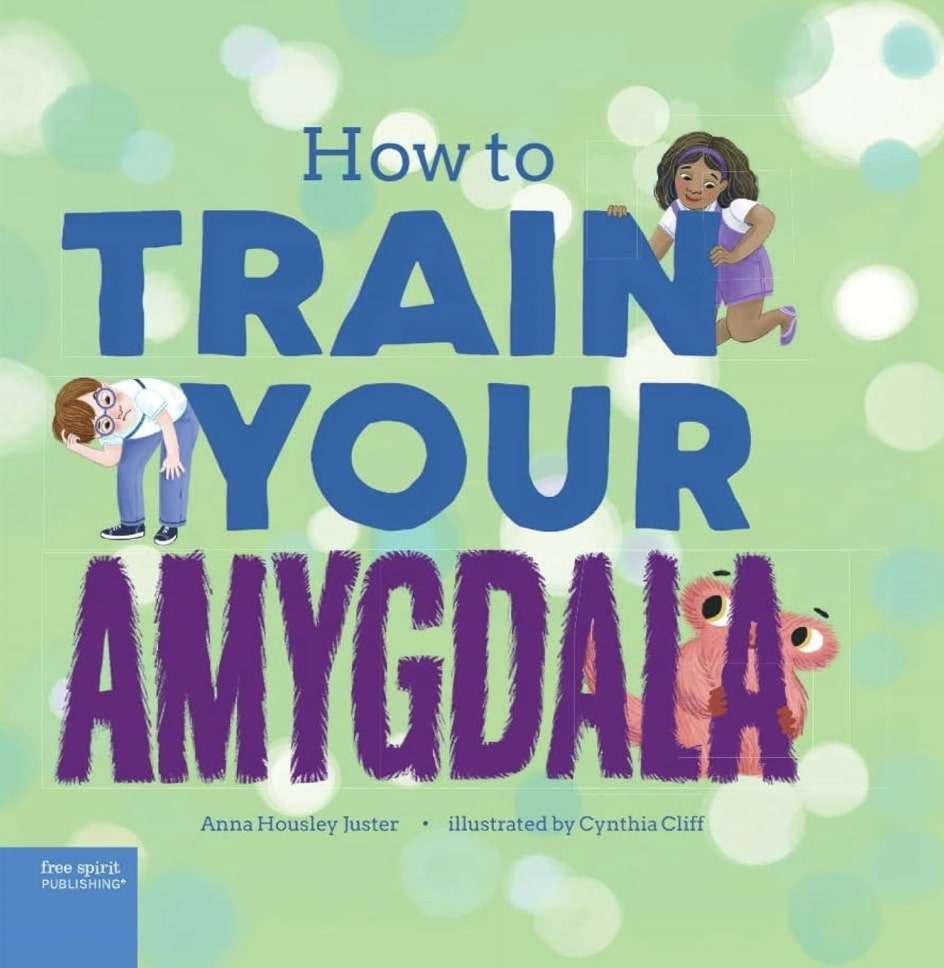As mental health awareness continues to grow, understanding the brain’s response to anxiety becomes even more critical —especially for children.
“I think it’s really important that, as the science catches up with human evolution, and as daily practitioners and parents and teachers catch up with the science, that we give kids the language to understand not just what happens in their bodies, but what happens in their brains — which is where what happens in their bodies starts — so we can help them understand that behaviours don’t come out of nowhere, and their feelings have a origin in the brain,” says Dr. Anna Housley Juster.
A child and adolescent mental health clinician, licensed independent clinical social worker, and early childhood education consultant, Housley Juster is taking strides in this space to make that happen, with her debut book, How to Train Your Amygdala. She spoke to Lianne Castelino in an interview for whereparentstalk.stagingserver.cloud/.
What is the Amygdala?
The amygdala is a small but powerful part of the brain responsible for processing emotions and detecting potential threats. “You’ll know your amygdala is working when you feel nervous before speaking in public, or when your heart races in a moment of fear,” Housley Juster explains. While its primary function is to keep us safe, the amygdala can sometimes misinterpret situations, causing unnecessary anxiety.
Her book aims to help children and their caregivers understand how the amygdala operates and how it can be trained to respond more appropriately to everyday stressors.
“I think there are a lot of reasons today to be rationally fearful,” says Housley Juster, who is also a mom. “Therefore, we need this amygdala response, we need this threat response. We need to know when something’s not safe and we need to know when to back away.”
However, she says caution is required. “The primary problem is that when the amygdala is activated chronically, when kids are staying in threat response mode, and that’s leading to high levels of cortisol in the body, and it’s impacting their overall function, I do get very concerned. That’s where we need to take a step back and think, how do we start at younger and younger ages of health in supporting mental health, not as a disorder. We tend to think you only talk about mental health when there’s a diagnosis. You only talk about mental health when there’s a clear intervention that’s needed.”
Why Understanding the Amygdala Matters
Juster emphasizes that while children are taught about their bodies—muscles, bones, and organs—the brain remains largely unexplored in early education. “Kids know their bones keep them upright and their heart keeps them alive, but few understand how their brain impacts their emotions and behaviours,” she says.

By equipping children with this knowledge, they can better understand their feelings and reactions. “I’ve worked with three- and four-year-olds who can say, ‘My amygdala is doing jumping jacks right now!’” she notes. “If they can learn words like ‘rectangle,’ they can learn ‘amygdala.”
While the target audience for her book was 4 to 8-year-olds, Housley Juster has found it resonates with a range of demographics. “What people are saying is that, as the adult who buys the book, they now understand more about what’s happening in their own brain and body.” She uses the book as a tool in her clinical practice with tweens and youth. “The basic psycho education of what’s happening with the threat response or the fight, flight, freeze response in the body can be translatable across all different ages, and the core essence of the conversation is that you can rewire your brain, and that will impact behaviours and feelings, and so that we all have more control over this response than we think that we might.”
Training the Amygdala Across Different Ages
The book introduces strategies for training the amygdala, which can be adapted for different age groups. These strategies include:
- Controlled Breathing – Slowing the breath can send signals to the brain to calm down.
- Progressive Muscle Relaxation – Tensing and then relaxing different muscle groups helps release stress.
- Visual Imagery – Creating calming mental images can shift focus away from anxiety.
Housley Juster stresses these techniques must be practiced regularly. “You can’t just tell a child to take a deep breath in the middle of a meltdown if they’ve never practiced it before. It has to become a habit.”
The Mental Health Crisis and the Role of Early Intervention
As a clinician, Housley Juster sees first-hand the rising rates of anxiety in children and adolescents. “We need our amygdala to alert us to real danger, but when it stays in a constant state of activation, it leads to chronic stress and high cortisol levels,” she warns.
She advocates for proactive mental health education, comparing it to physical health: “You don’t wait until a child is malnourished to start feeding them healthy food. We should approach mental health the same way—by providing tools before serious issues arise.”
Mental Health as a Life Skill
Housley Juster views training the amygdala as a critical life skill that can aid in conflict resolution, decision-making, and overcoming fear-based barriers. “Understanding how your brain reacts to stress can help in relationships, work, and everyday life,” she explains.
Anger, she notes, is often a secondary emotion to fear. “If we teach kids how to manage fear, we’re also teaching them how to regulate their emotions and interact with others in healthier ways.”
Helping Parents Help Their Kids
One of the biggest challenges for parents is managing their own stress while supporting their children’s emotional regulation.
Juster reassures parents that it’s never too late to retrain their own amygdala. “Even if you didn’t learn these skills as a child, you can still develop them as an adult,” she says, adding, “I wish I understood this about myself at a much younger age, because when you do understand the reason it’s a life skill is understanding what’s happening in your brain and body helps you in conflict resolution. It helps you manage fear that might hold you back from doing something that otherwise would be a really good thing to do.”

By modelling emotional regulation strategies, parents can help their children feel more secure she says. “If a child is anxious about school and their parent responds with frustration, the child’s anxiety escalates. But if the parent acknowledges the worry and remains calm, they signal to the child that they can handle the situation together.”
A Book Born from Real-Life Experience
The idea for How to Train Your Amygdala emerged during the COVID-19 pandemic, when Housley Juster was conducting tele-health sessions with children. She recalls a moment when a young patient, petting her cat during a session, compared calming her brain to training her pet. “That was the spark,” Housley Juster says. “I realized we could make the amygdala a character, one that kids would want to help train.”
 The book is designed to be engaging and accessible, with a touch of humour. Drawing on her experience as a former director of content for Sesame Street, Housley Juster ensured that the book was as entertaining as it was educational. “If an adult has to read it multiple times with their child, I wanted it to be something they actually enjoy,” she says.
The book is designed to be engaging and accessible, with a touch of humour. Drawing on her experience as a former director of content for Sesame Street, Housley Juster ensured that the book was as entertaining as it was educational. “If an adult has to read it multiple times with their child, I wanted it to be something they actually enjoy,” she says.
A Call for Greater Awareness
Juster hopes her book will contribute to a broader movement toward integrating brain science into early education. “We shouldn’t stop teaching kids about their bodies at the neck,” she says. “Understanding the brain gives kids agency over their emotions and behaviours, and that’s incredibly empowering.”
